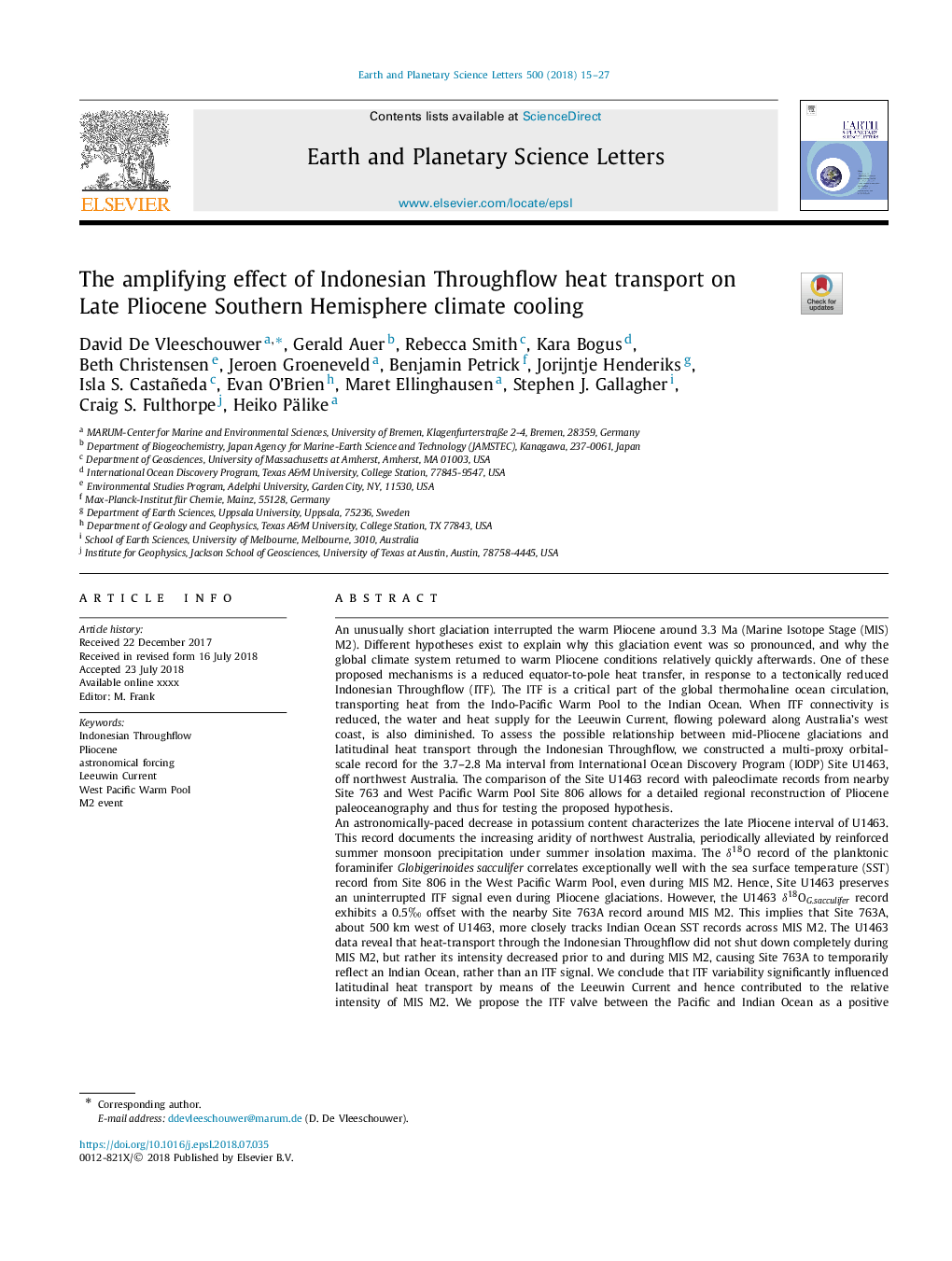| Article ID | Journal | Published Year | Pages | File Type |
|---|---|---|---|---|
| 8906648 | Earth and Planetary Science Letters | 2018 | 13 Pages |
Abstract
An astronomically-paced decrease in potassium content characterizes the late Pliocene interval of U1463. This record documents the increasing aridity of northwest Australia, periodically alleviated by reinforced summer monsoon precipitation under summer insolation maxima. The δ18O record of the planktonic foraminifer Globigerinoides sacculifer correlates exceptionally well with the sea surface temperature (SST) record from Site 806 in the West Pacific Warm Pool, even during MIS M2. Hence, Site U1463 preserves an uninterrupted ITF signal even during Pliocene glaciations. However, the U1463 δ18OG.sacculifer record exhibits a 0.5Ⱐoffset with the nearby Site 763A record around MIS M2. This implies that Site 763A, about 500 km west of U1463, more closely tracks Indian Ocean SST records across MIS M2. The U1463 data reveal that heat-transport through the Indonesian Throughflow did not shut down completely during MIS M2, but rather its intensity decreased prior to and during MIS M2, causing Site 763A to temporarily reflect an Indian Ocean, rather than an ITF signal. We conclude that ITF variability significantly influenced latitudinal heat transport by means of the Leeuwin Current and hence contributed to the relative intensity of MIS M2. We propose the ITF valve between the Pacific and Indian Ocean as a positive feedback mechanism, in which an initial sea level lowering reduces ITF heat transport, in turn amplifying global cooling by advancing the thermal isolation of Antarctica.
Related Topics
Physical Sciences and Engineering
Earth and Planetary Sciences
Earth and Planetary Sciences (General)
Authors
David De Vleeschouwer, Gerald Auer, Rebecca Smith, Kara Bogus, Beth Christensen, Jeroen Groeneveld, Benjamin Petrick, Jorijntje Henderiks, Isla S. Castañeda, Evan O'Brien, Maret Ellinghausen, Stephen J. Gallagher, Craig S. Fulthorpe, Heiko Pälike,
